Thunderstorm
Earthquake
Light rain with crickets chirping
Songbirds
Colony of Sea Lions
Fireplace Crackling
Gyllybeach sea waves
Medieval Church Bell
Temple ambience
Swords Clanging
Mining
Marching troops
Horse Carriages
Steam Train crossing
Coal Mining
Mechanical Generator
Old vinl record
Hyde park in london
Night village
Marker on paper
Mechanical Keyboard
Missile Launch
Indian Traffic
Week 1
The first day of the new module began with an overview of what to expect in the coming weeks. The emphasis was on increased testing, prototyping, making, detailing, and focusing on the craft and art direction of the final artefacts.
Projects Overview:
Project 1 - Individual work (studio and essay)
Project 2 - Group project
Reading List:
Extreme Self by Douglas 155.2
Creative Conscious
Greyworld
New Dark Age: Technology and the End of the Future by James Bridle
The final artwork is not just the artefact itself; it comes alive when someone interacts with or participates in it. The goal is to curate a point of view through various forms of data (timeline, recording, interview).
Key Concepts:
Information Experience Design
Example: Washington DC Memorial for Vietnam War Veterans
20 Minutes in Birmingham
Information Interaction Design
Sensorial Design
Example: Shy Poster by Trapped in Suburbia
Influential Designers:
Nicholas Felton
Bismarck and Mous Public Face
Swiss Army Man
Critical Elements to Remember:
Criticality
Reframing
Redefinition
Questions to ponder:
Why is the data interesting to you?
Who are you?
How will you make others see your perspective?
Information Workshop Considerations:
Respond to given themes and datasets.
Consider perspectives and impact of the source.
Organize, visualize, or display the data.
Deliver an engaging experience and understand the role of 'performance' in the presentation.
Initial Areas of Interest:
Water and Marine Life:
Create marine-themed artwork.
Highlight the beauty and importance of oceans and marine ecosystems.
Wildlife and Biodiversity
Historical Perspectives:
Take the audience on a journey through history with artworks inspired by different time periods.
Week 2: Reflections on Martin's Lecture on Curation
This week, we delved into the fascinating world of curation with Martin’s insightful lecture. His discussion highlighted several key concepts that reshaped my understanding of art and its interpretation.
Art as a State of Encounter (Interstice): Martin introduced the idea of art as a state of encounter, emphasizing the interstice—the space between the viewer and the artwork. This space is where meaning is created, making each encounter with art a unique and personal experience.
Semiotics: Understanding Signs: We explored the field of semiotics, the study of signs and symbols and their use or interpretation. Martin broke down the components of a sign, which is anything that conveys meaning. The sign is composed of two parts:
Signifier: The form that the sign takes, such as a word, image, or sound.
Signified: The mental concept that the signifier evokes in the mind.
He provided clear examples to illustrate these concepts:
Icon: A photograph, which resembles what it represents.
Index: An example Martin used was cat footprints accompanied by the word "meowz," indicating a direct, causal relationship.
Symbol: Numbers and letters, which are arbitrary and learned through cultural context.
Semionaut: The Modern Artist as an Explorer of Signs: A particularly intriguing concept was the "semionaut," a term describing a contemporary artist who navigates and creates new pathways between signs. Aby Warburg was highlighted as an exemplar of this, with his innovative approach to connecting disparate images and ideas.
Cultural and Artistic References: Martin’s lecture was rich with references that expanded on these ideas:
The Cathedral of Erotic Misery: An evocative title that suggests a space where complex, possibly conflicting emotions and ideas are explored.
Museum of Witchcraft: A place that likely uses curation to delve into the cultural and historical context of witchcraft, challenging perceptions and evoking deeper understanding.
Ways of Seeing by John Berger: This seminal work was recommended as essential reading, offering profound insights into how we perceive art and the world around us.
Content Curation: The lecture concluded with a discussion on the importance of content curation. In an age where information is abundant, the ability to select, organize, and present content thoughtfully is invaluable. Curation shapes how we interpret information and experience art, making it a crucial skill for anyone in the creative and cultural sectors.
During the first day of our new module, we participated in a class exercise that involved brainstorming in groups of three. Each group was assigned a theme to explore, and ours was the environment. Our task was to identify current trends in data related to the environment. Initially, we thought of vegan and non-vegetarian foods as a topic under the environment theme. We decided to focus on milk, which is one of the most common animal-sourced items. We conducted research on the spot to learn about how milk is obtained and processed, and what kinds of chemicals and additives are used to make it available in stores today. We examined the impurities that come with it and how it is modified to be sold for profit. After our research, we were required to sketch an artefact based on the data we had collected.
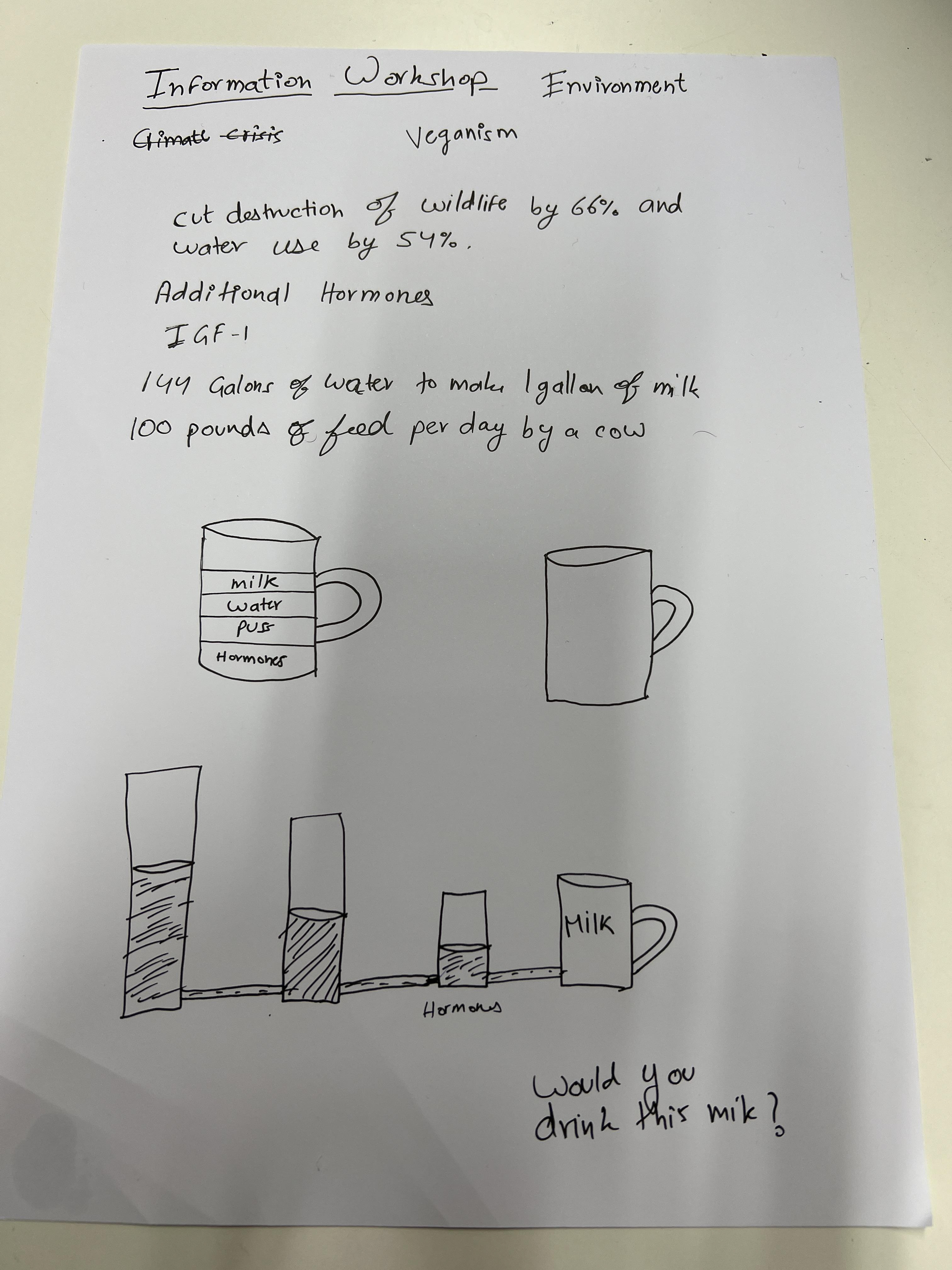

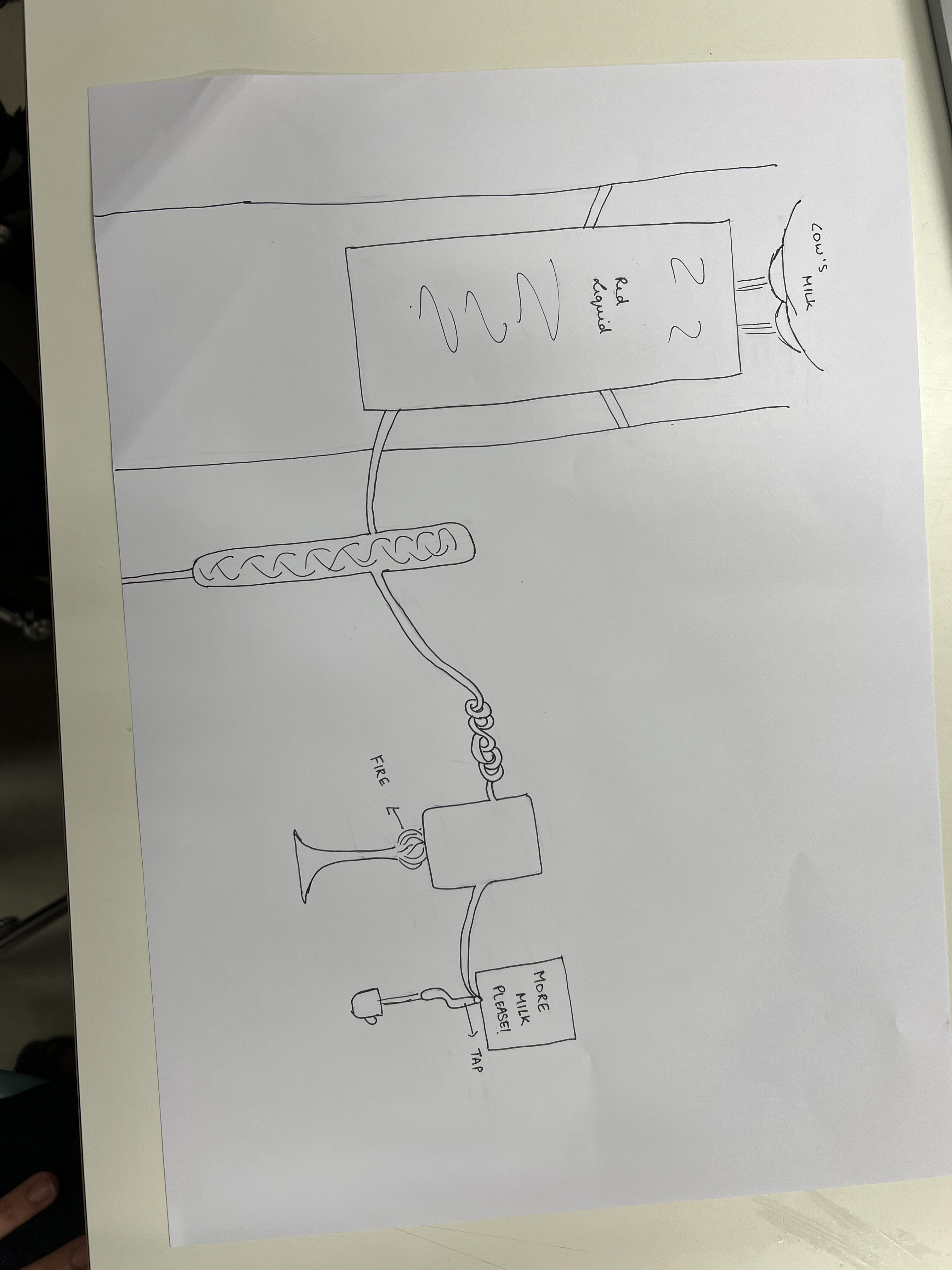
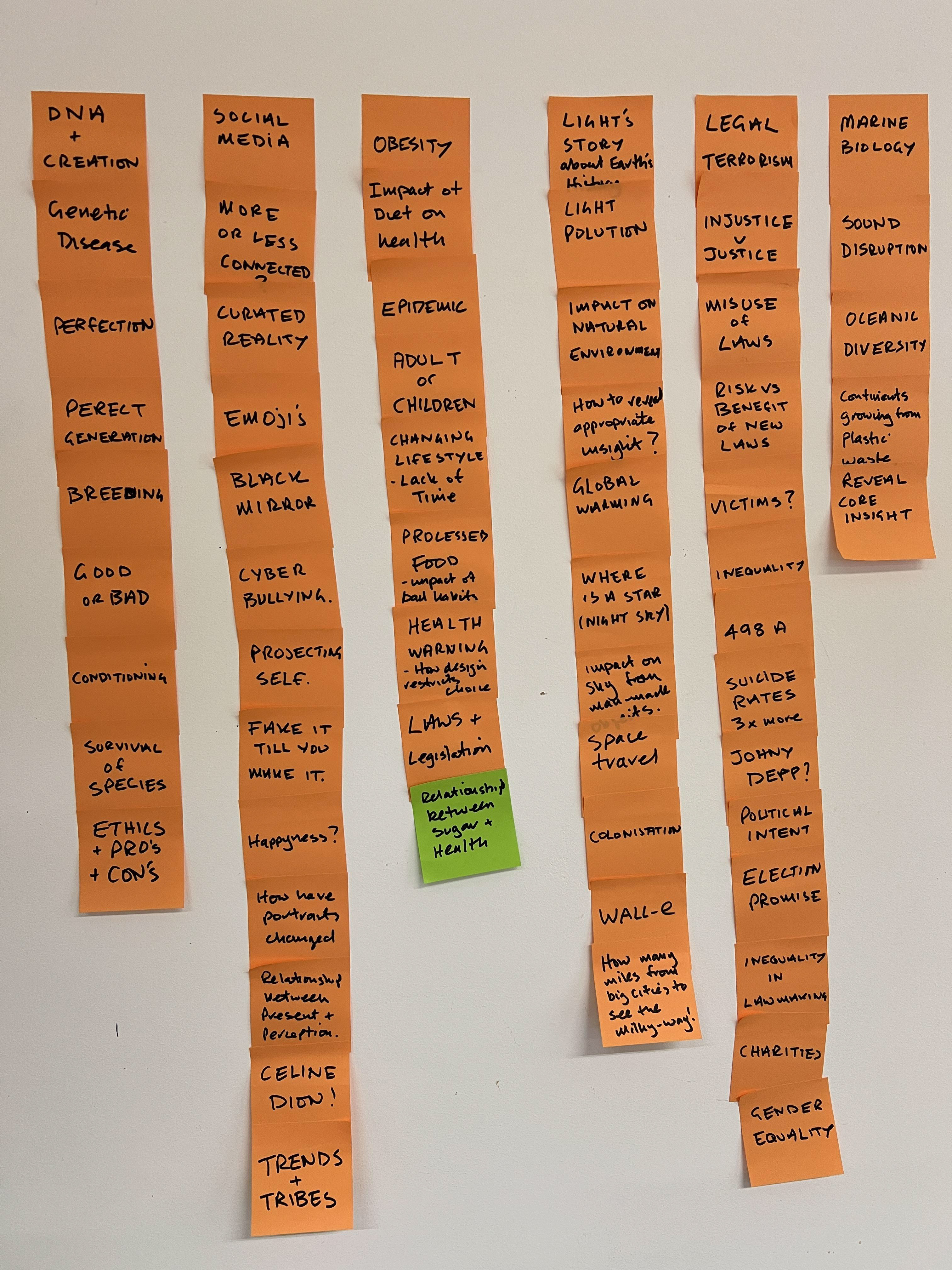
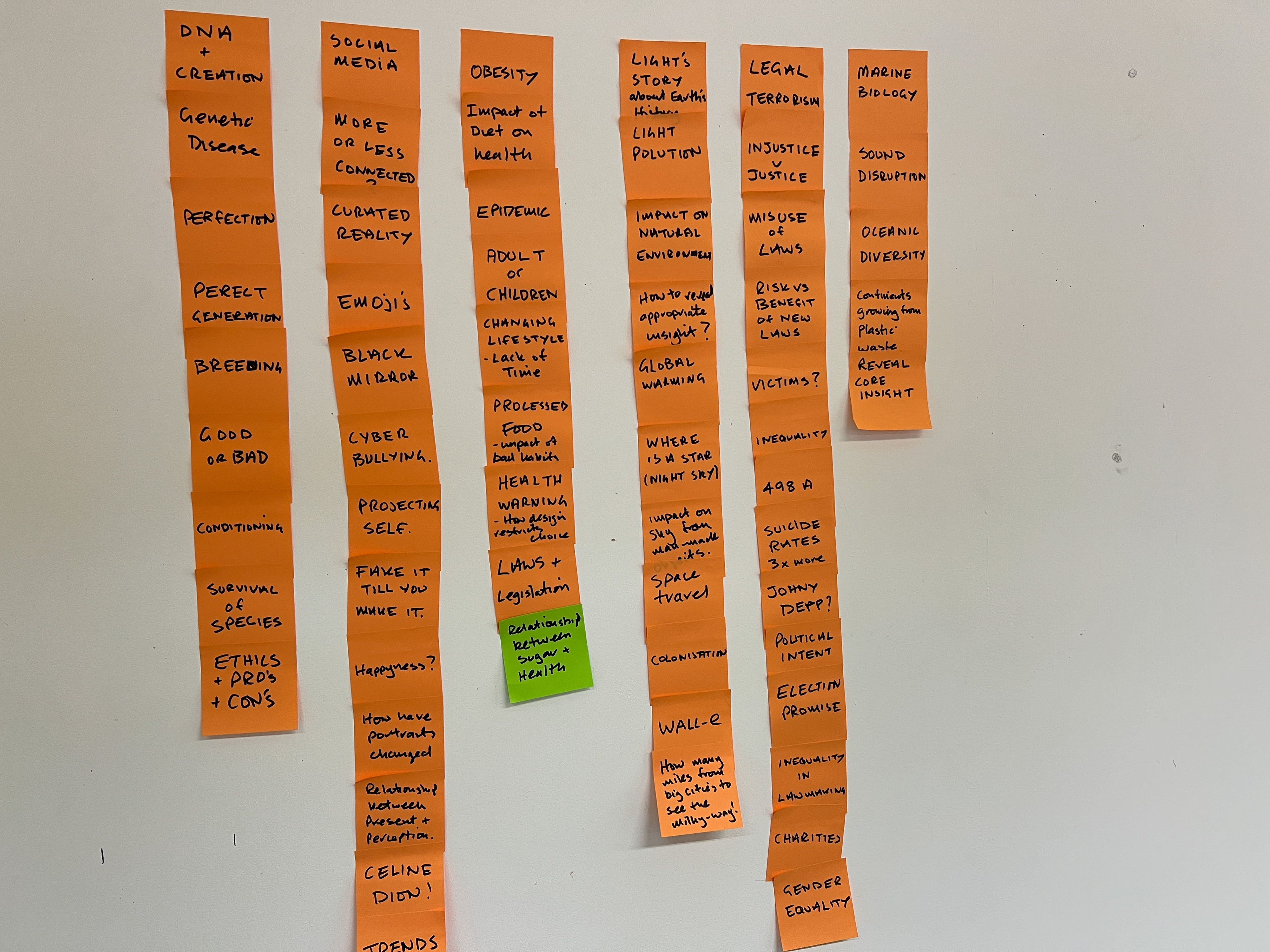

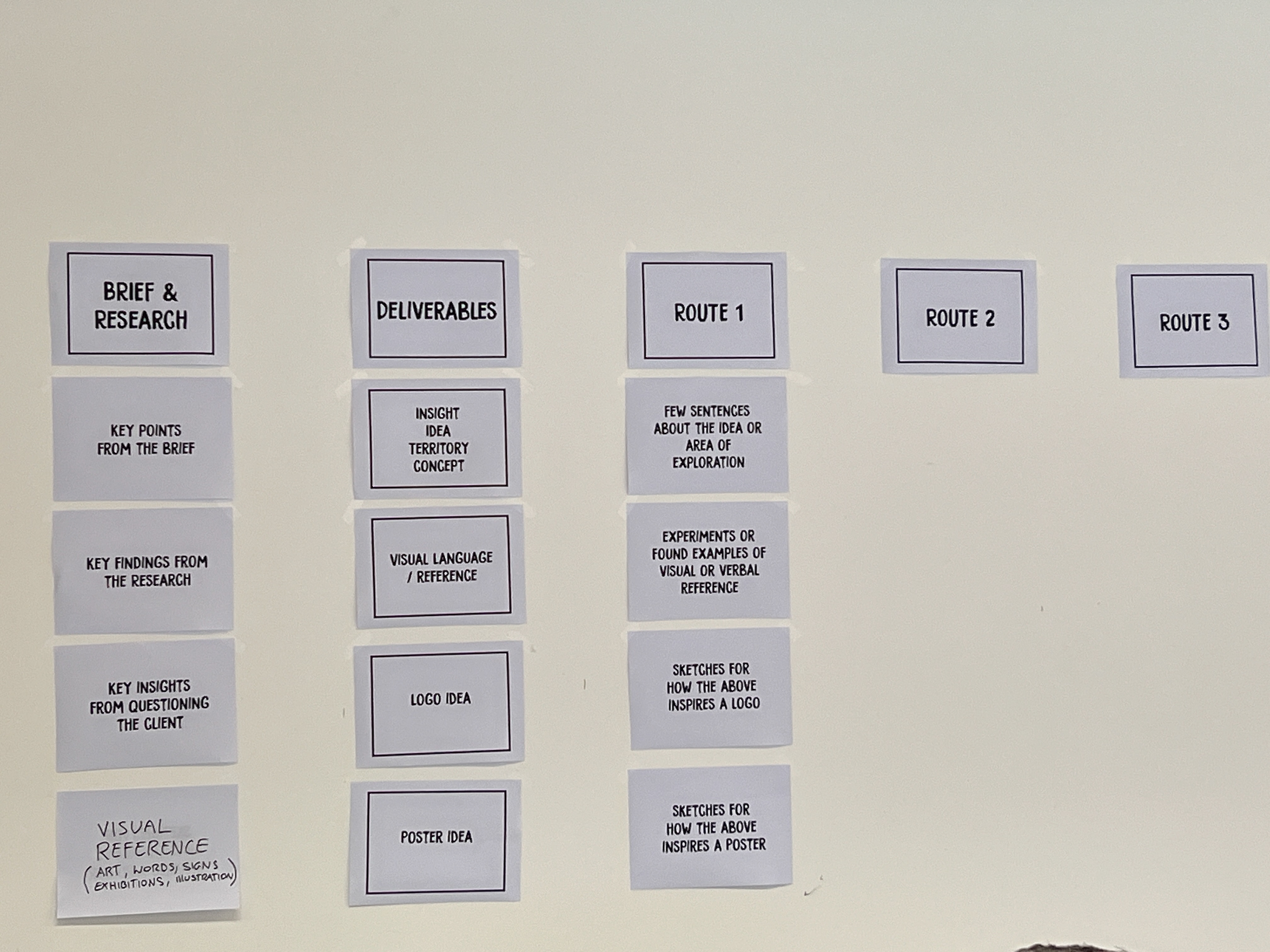

During the information workshop, our group had the opportunity to attend tutorials with Bryan and Lizzie. These tutorials were designed to provide us with a starting point for our research on data nodes that we wanted to explore. As soon as we began discussing potential topics, my mind immediately went to marine biology. This was largely due to the fact that I have a close childhood friend who is currently pursuing a Bachelor's degree in environmental biology, with a specialization in marine biology and oceanic diversity in Nottingham. My friend and I frequently discuss the rising dangers to marine animals, which are becoming increasingly prevalent in today's world. So, I was particularly interested in exploring this topic in further detail. I began researching some of the modern dangers that humans pose to the marine environment and its inhabitants.
Week 3: Zine Workshop and Key Learnings
This week was filled with creative exploration and insightful discussions, thanks to the Zine Workshop and Martin’s lecture.
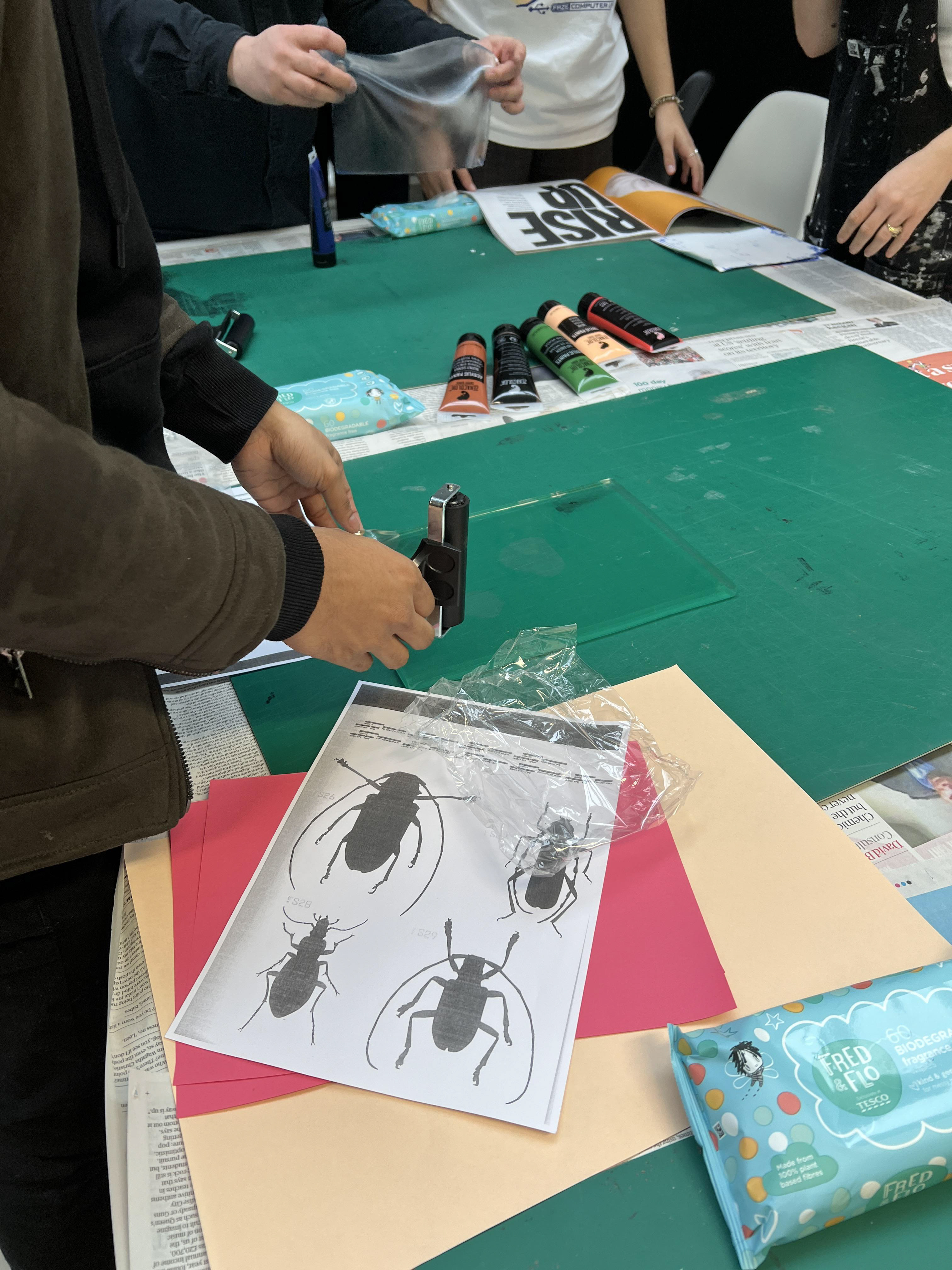

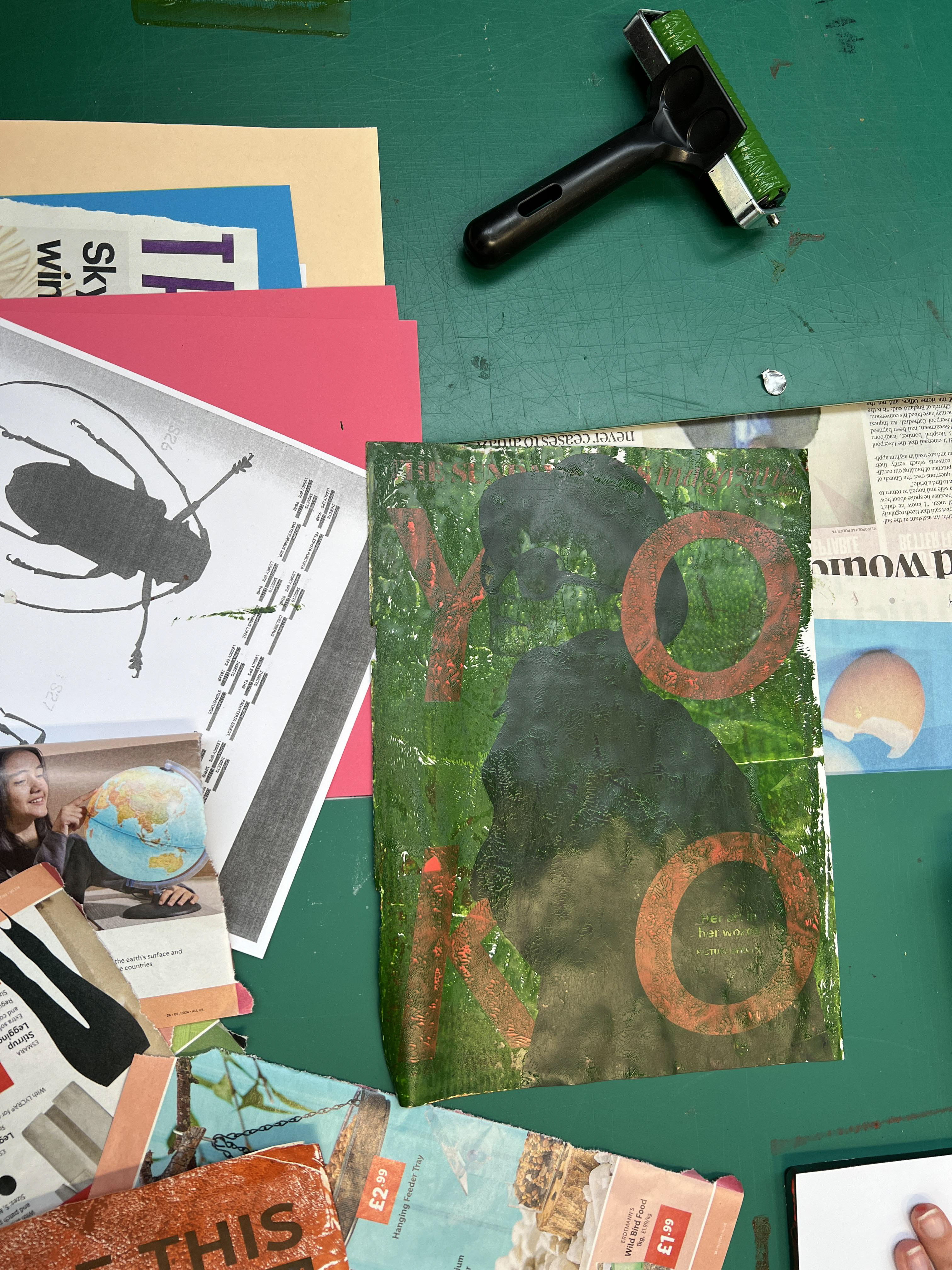

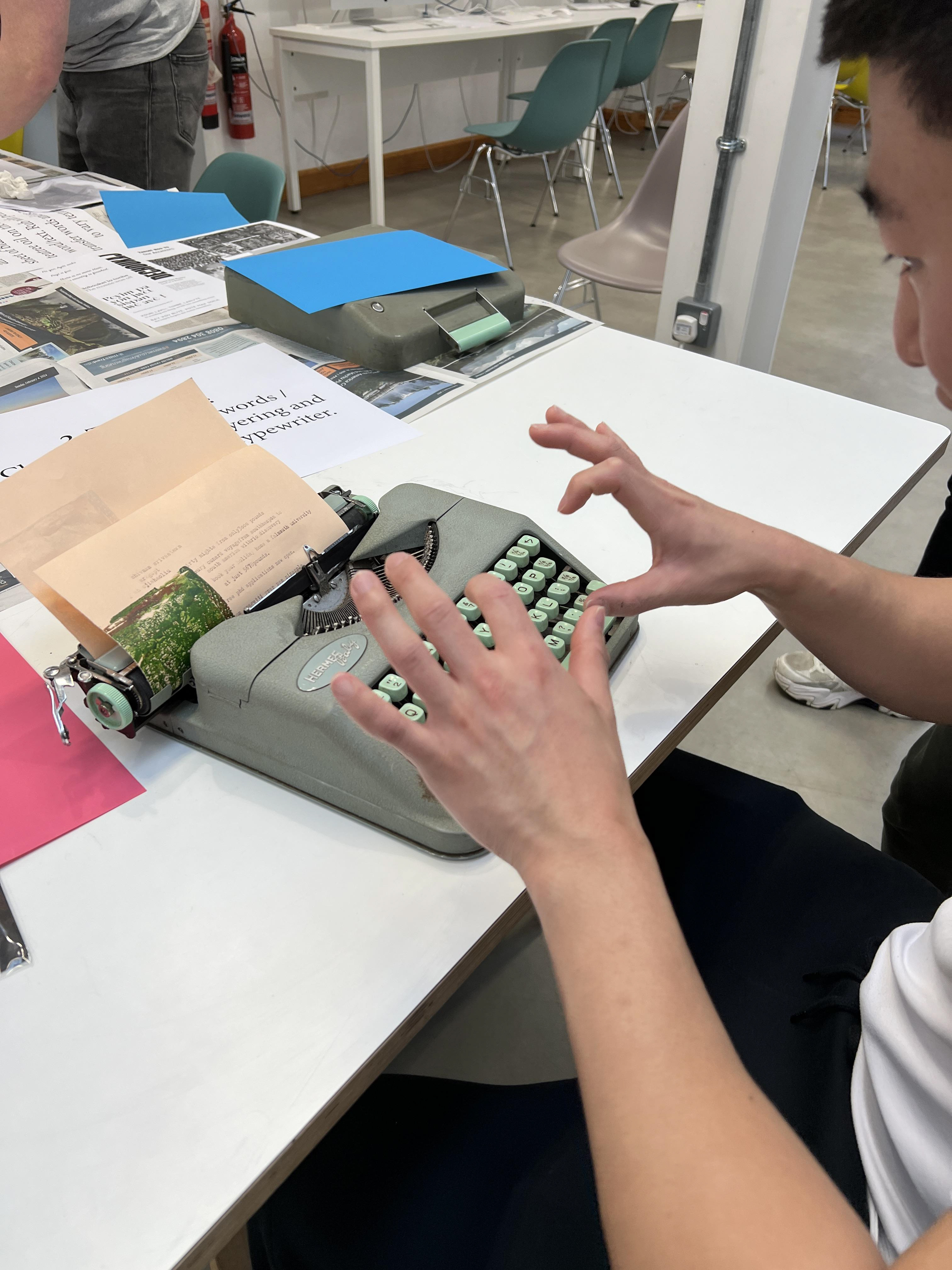
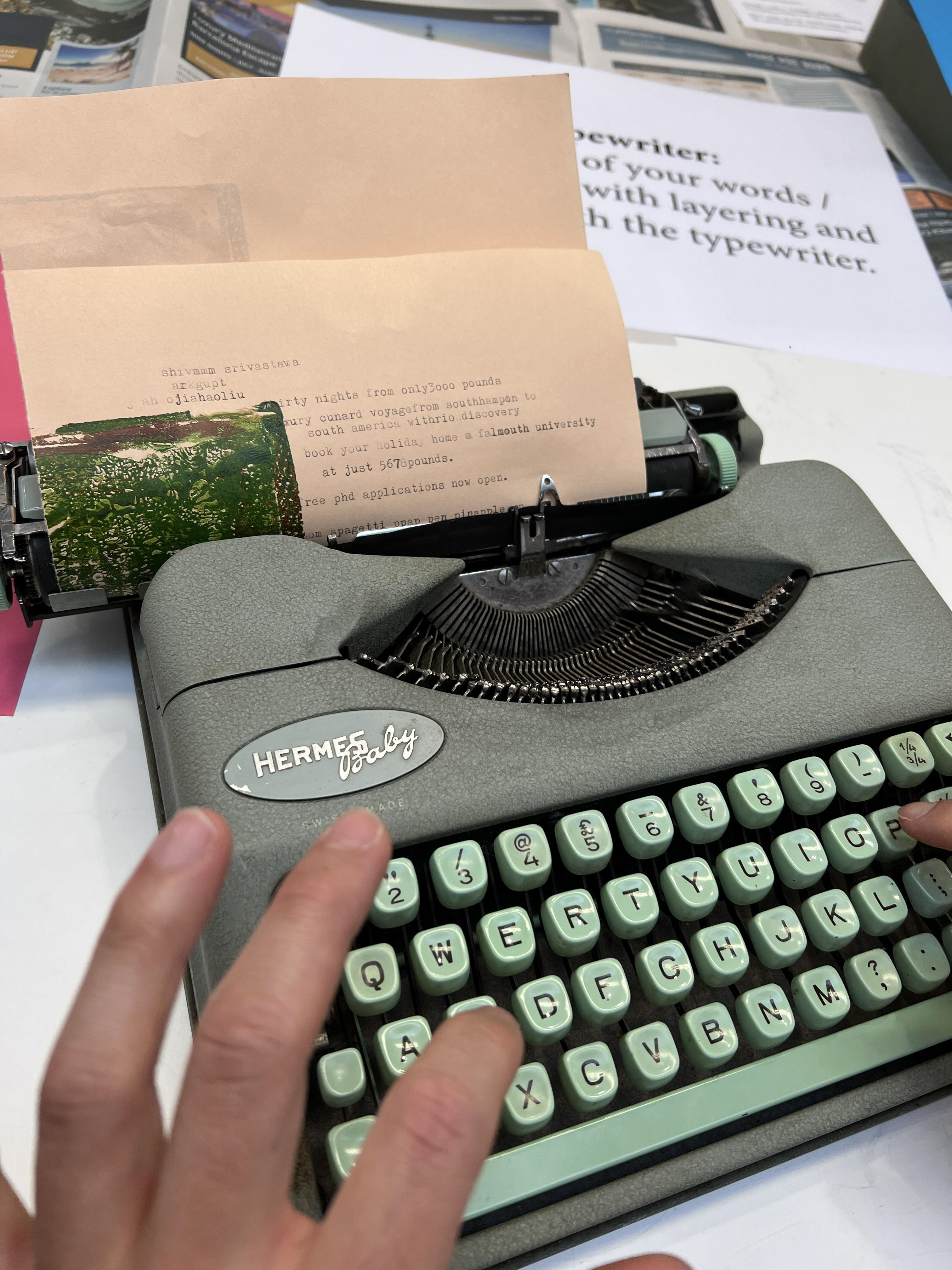
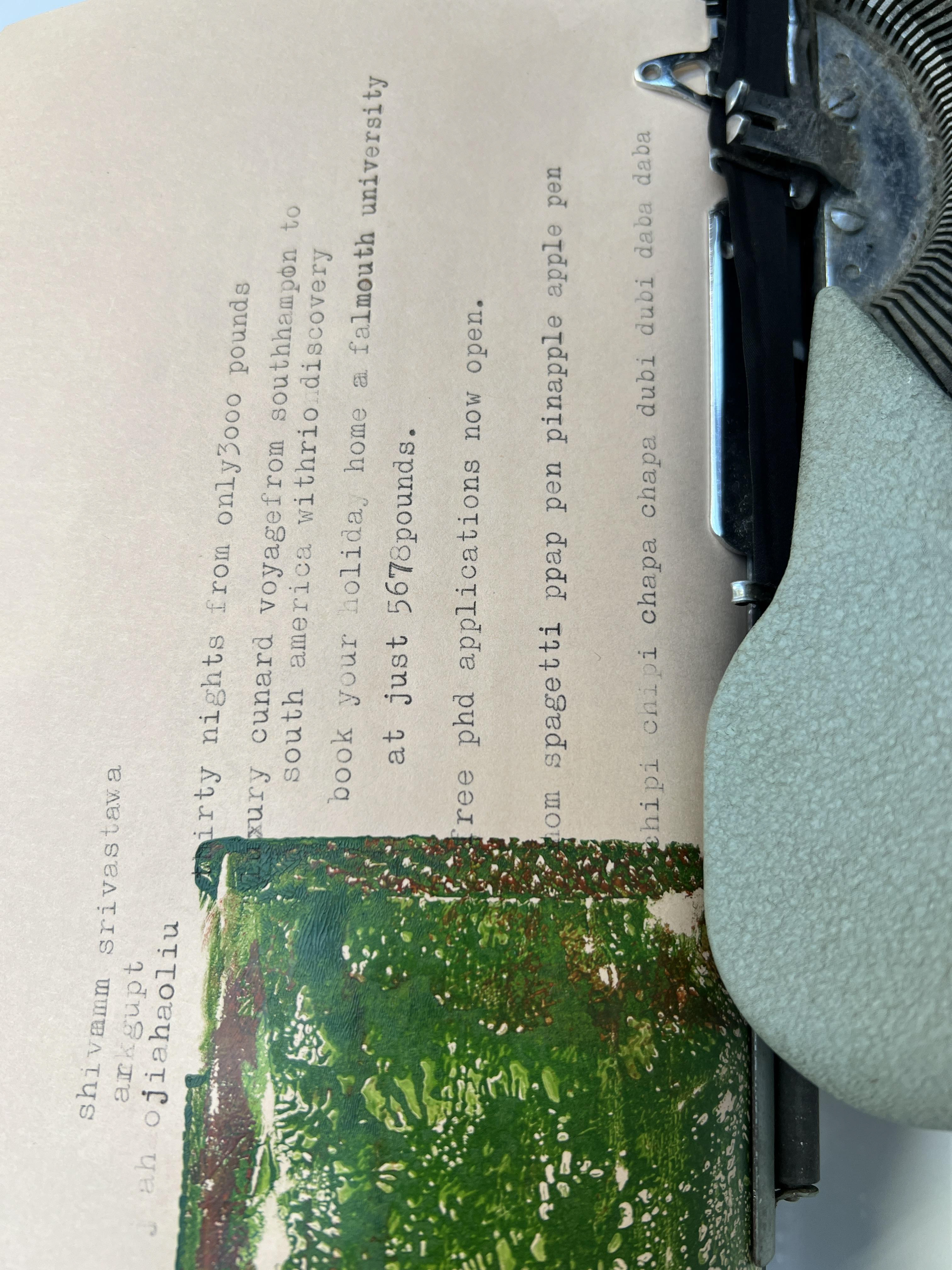
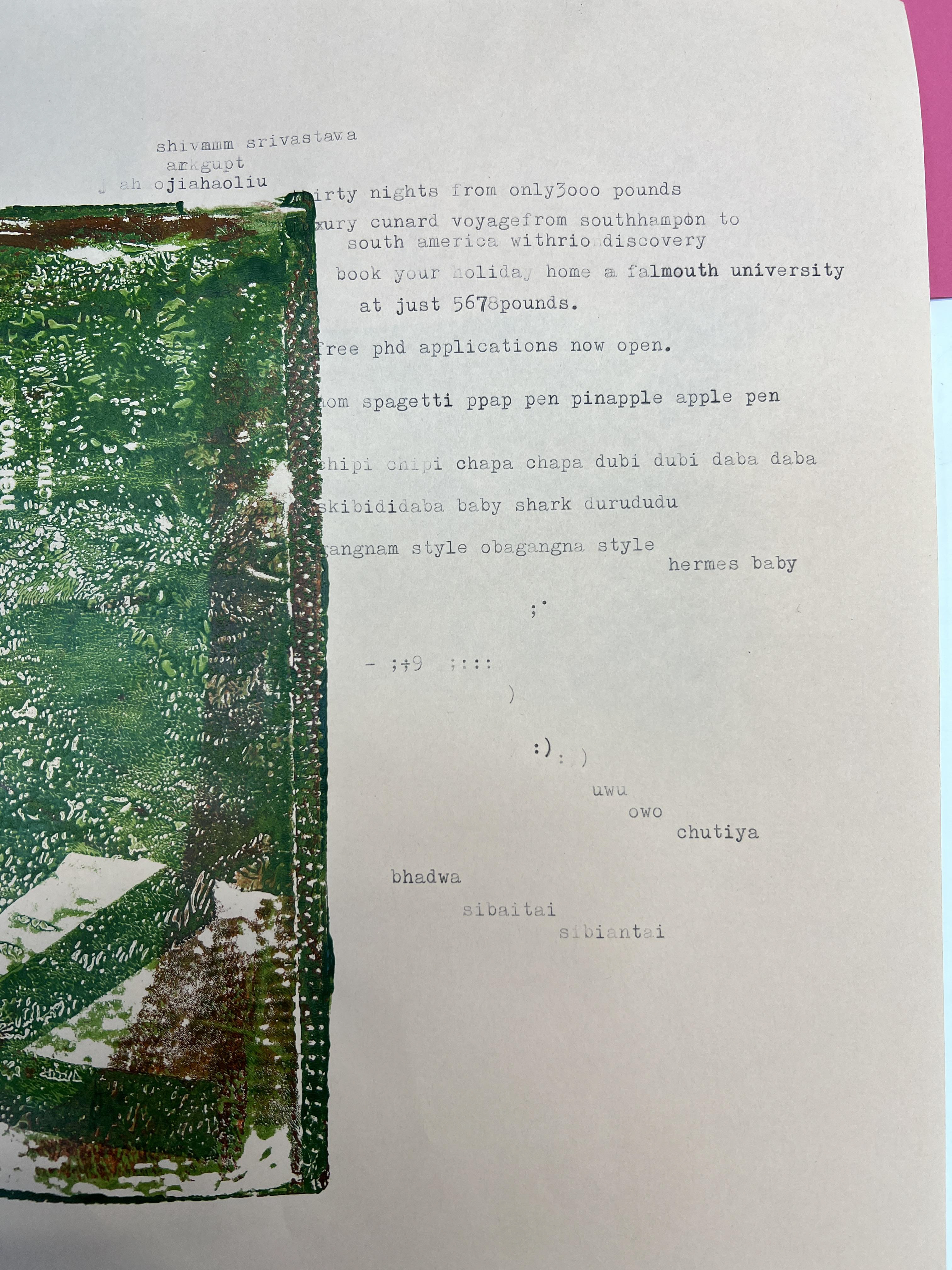

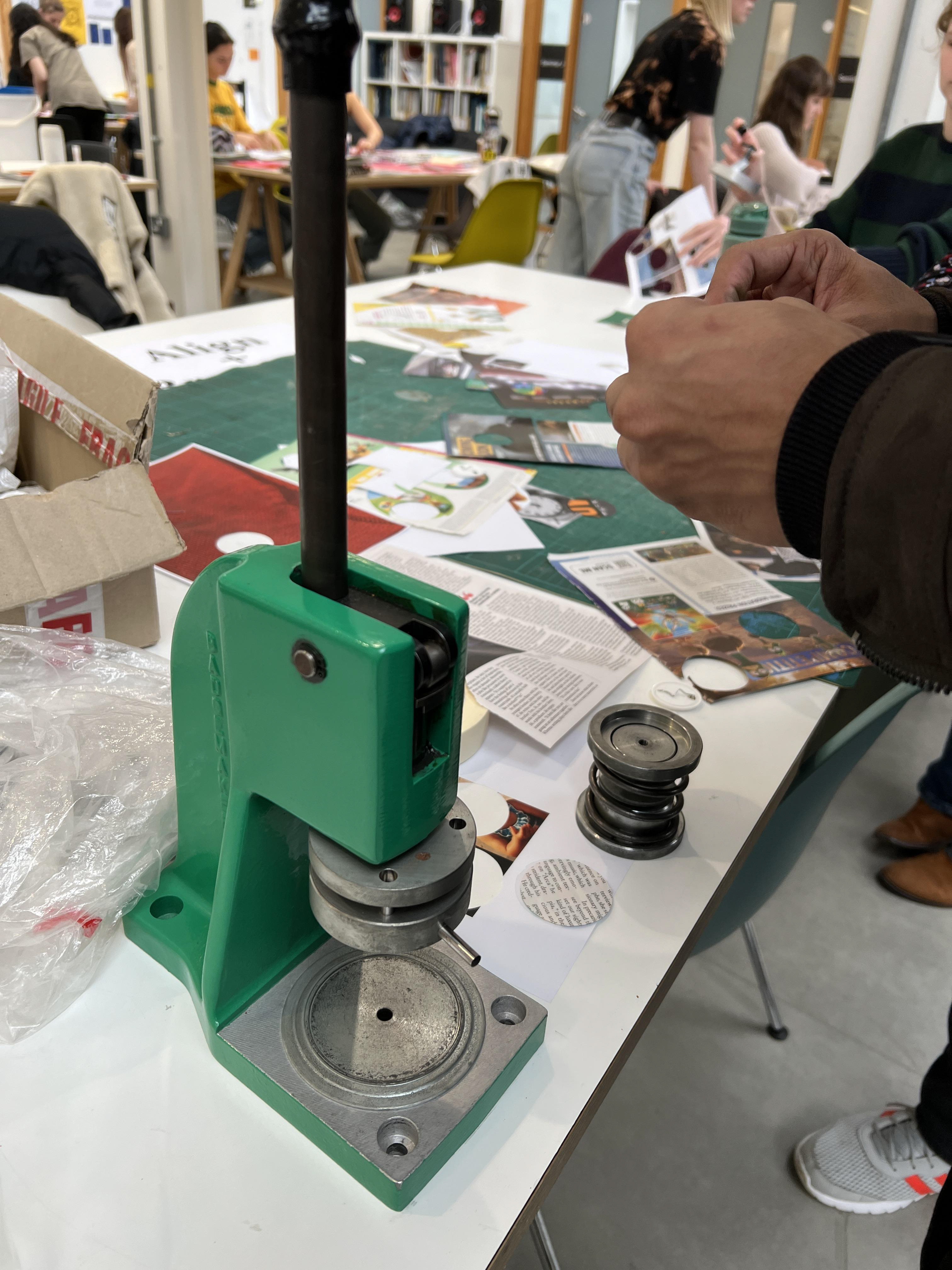

Guest Speakers and Networking: We had the pleasure of hearing from several notable guest speakers:
Will Kinchin
GBH London - Our Friends
NB Studio
Common Curiosity
In particular, networking with WillWorks was a highlight. I reached out to Will to express my admiration for his presentation, especially the "plastic awards" segment, which resonated deeply with my dream project. I shared my ongoing research in marine biology and environmental conservation for our Curate and Build module. Will’s insights on campaign creation, especially the lessons learned from the plastic-free awards, were invaluable.
Martin’s Lecture: Reflections on Positive and Negative Experiences
Martin's lecture provided profound insights into how the brain focuses more on negative experiences than positive ones. Reflecting on my worst and best experiences helped contextualize this idea:
Worst Experience: An internship with a 3D Meta company, where the lack of structure led to constant design changes based on varying opinions. This chaos was a significant source of frustration.
Best Experience: Collaborating on a project displayed at the Uffizi Gallery in Florence during my bachelor’s degree. This experience was incredibly rewarding due to the opportunity to work with designers and brands worldwide.
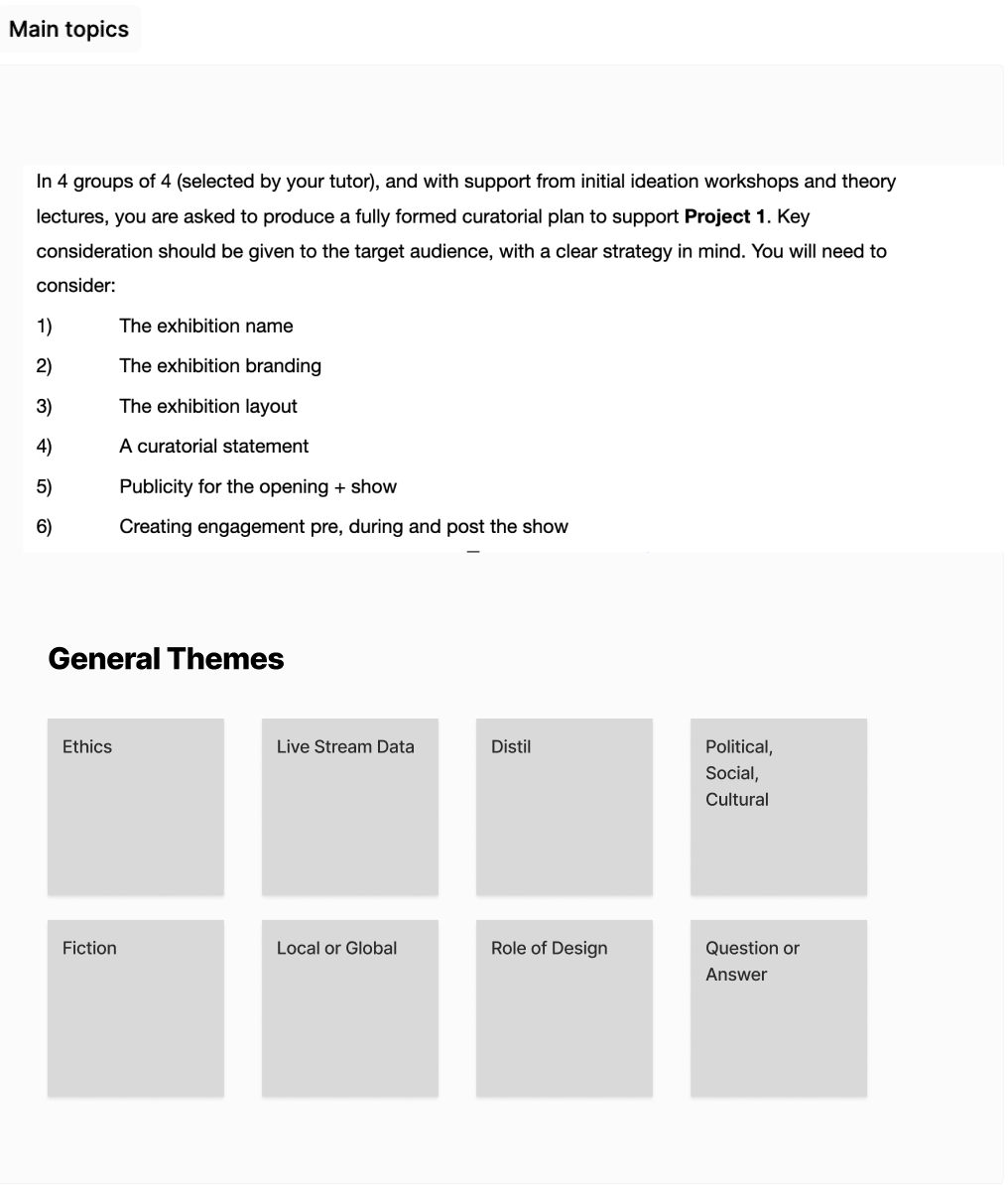
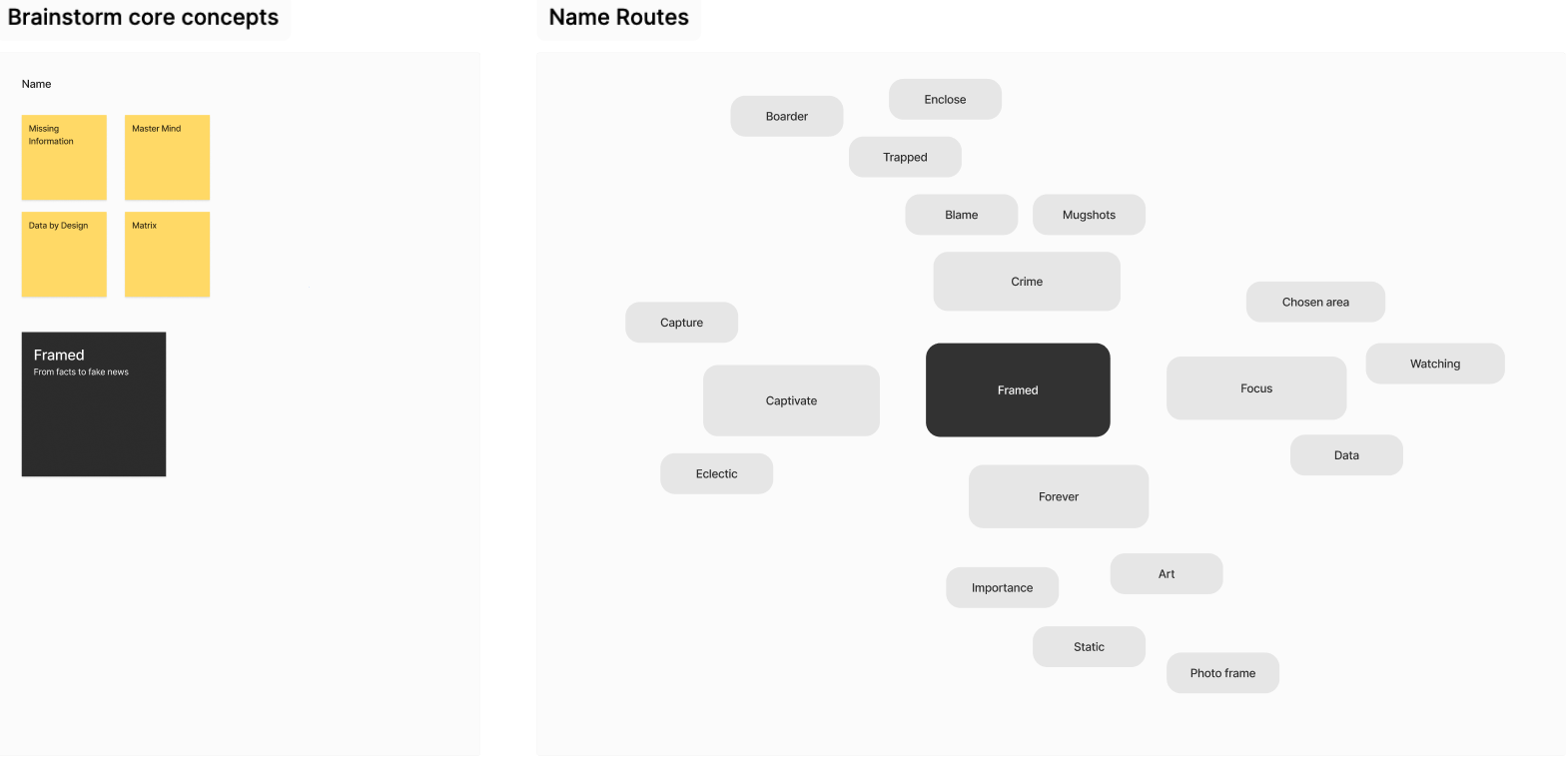
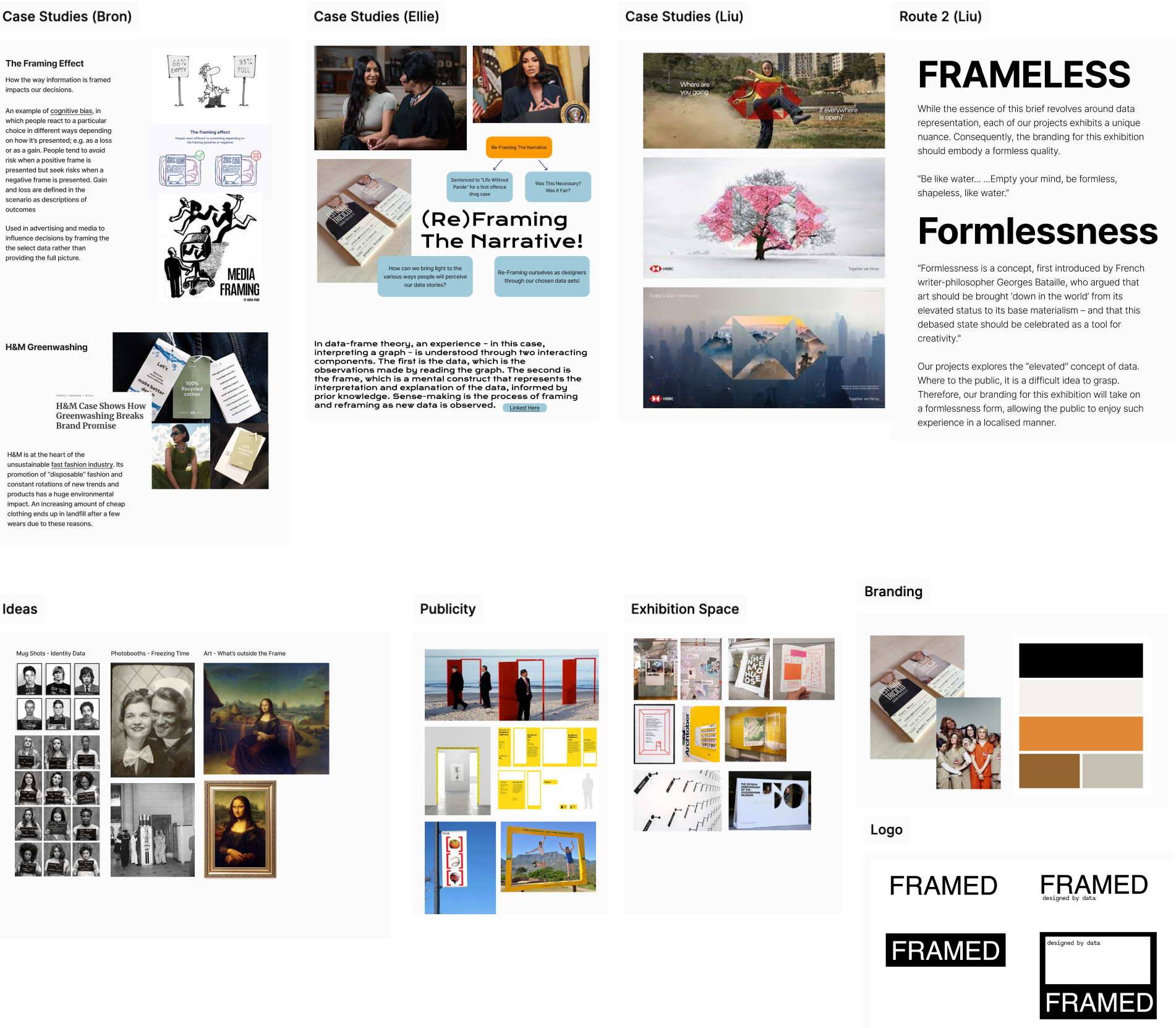
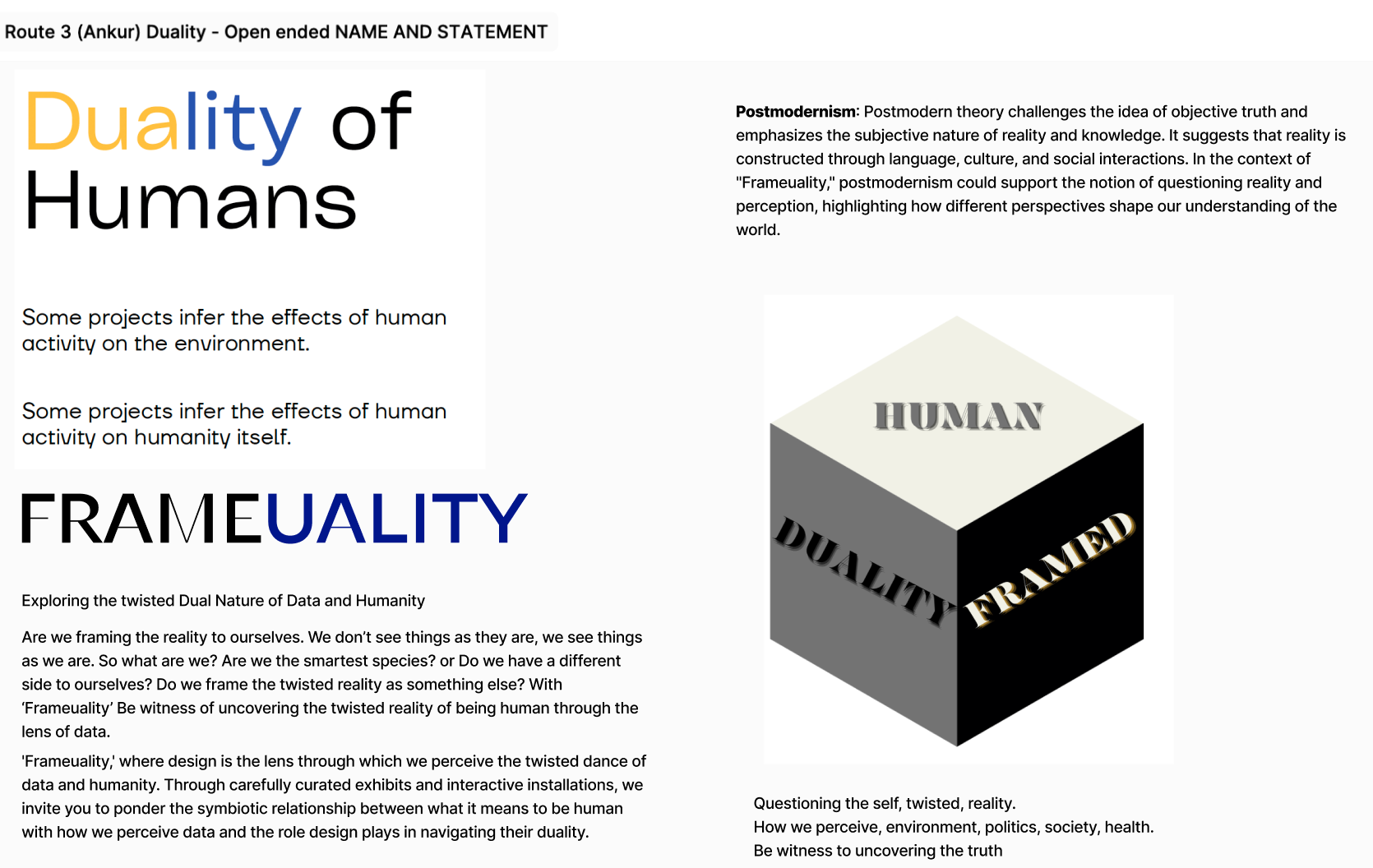
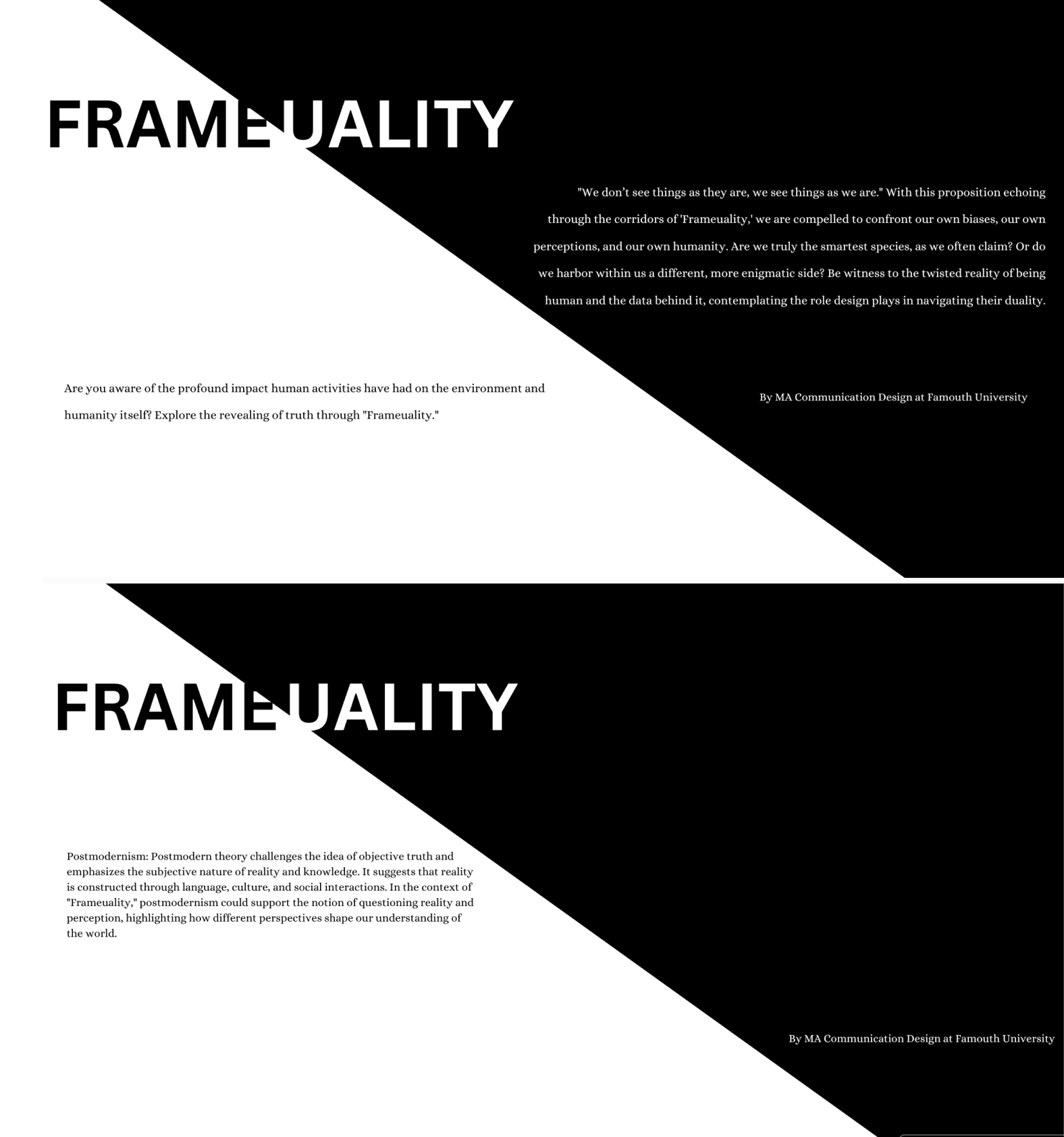
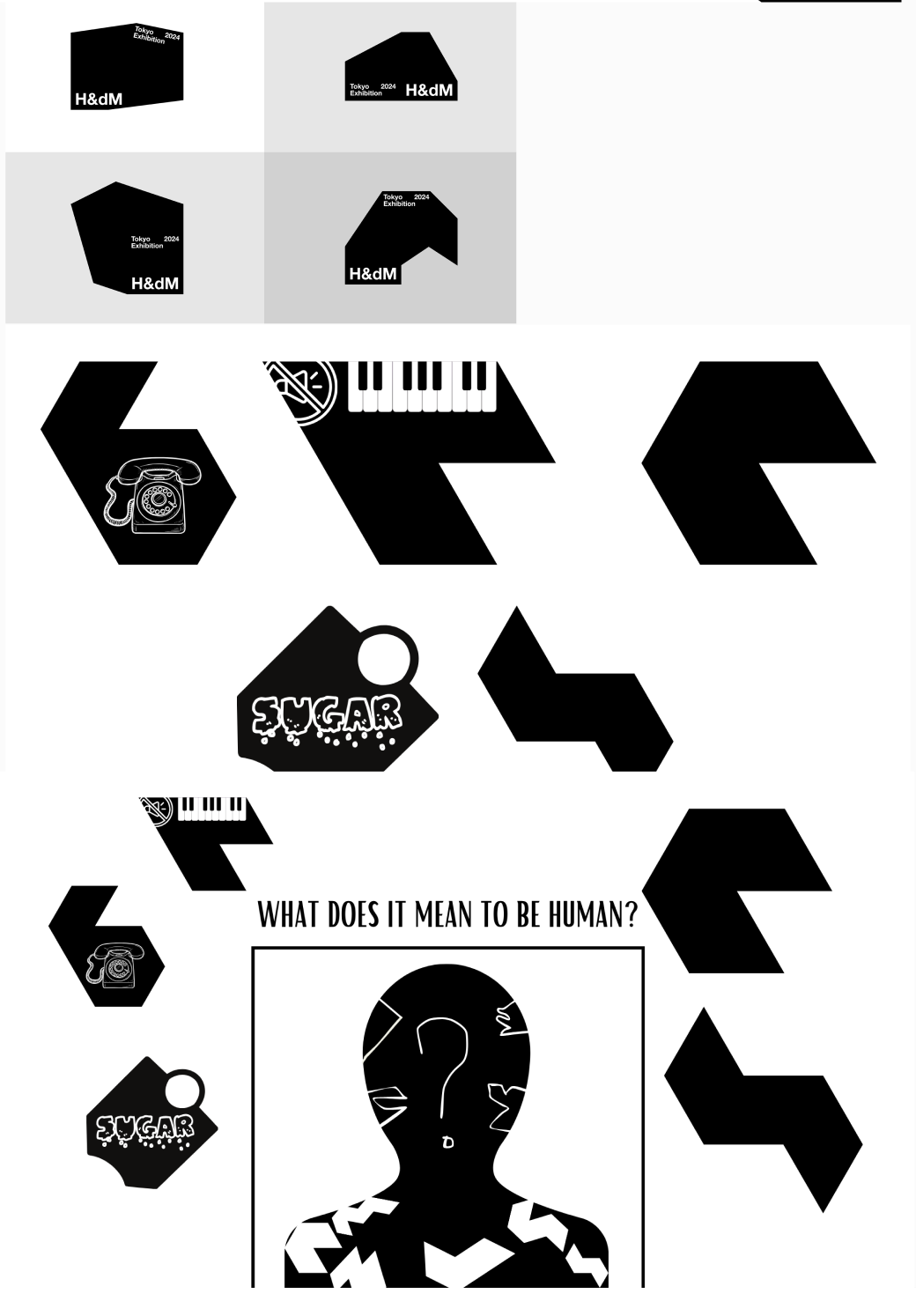
Ongoing Work and Project Development
Topics to Explore:
Marine Biology
Noise Pollution
Ideas for Artefacts:
Jenga Wooden Blocks: Representing the food cycle in the ocean, illustrating the disruption caused by the removal of one block.
Bottle of Ocean Water: With a cap representing zooplankton, demonstrating how a single factor can disrupt the entire ecosystem.
Visitor Interaction: Considering what actions I want visitors to take with my work is crucial for engagement and impact.
Upcoming Workshops and Project Planning
Week 6 Main Insight:
Story, Data, Artefact: Integrating narrative, empirical data, and physical artefacts for a comprehensive project.
Arduino Workshop Project Idea:
Audio Level Detection Device: To display decibel levels and compare them to human-induced noise pollution in oceans. A horn press produces a loud sound, displaying the sound level or the number of lives affected.
Instrument Idea
Project Planning:
I had envisioned creating an artefact that represents the journey of noise disruptions from pre-human times to our digital age. To bring this idea to life, I selected two themes of sounds that I intend to capture. Additionally, I aim to explore ancient sounds that can no longer be produced or captured with modern technology. Although I haven't finalized the execution details of the artefact, I plan to use these selected sounds as data to illustrate the noise journey.
I have outlined a timeline graph that will guide my efforts in finding or capturing sounds corresponding to each major period. This timeline will serve as a structured plan, helping me to systematically relate specific sounds to their historical contexts. By following this plan, I aim to create an immersive experience that showcases the evolution of noise disruptions through the ages, providing a comprehensive auditory journey from pre-human history to the present digital era.
To effectively use a musical keyboard to showcase my data on the journey of sound, I realized that I could leverage the visual duality of a piano's black and white keys. This duality perfectly mirrors the contrasting nature of my data, representing sounds as both positive and negative from pre-human times to our digital age. The black and white keys of the piano provide a striking visual metaphor for the binary nature of sound, encompassing both its harmonious and disruptive qualities. By assigning positive sounds to the white keys and negative sounds to the black keys, I can create an intuitive and engaging way for the audience to interact with the data. This approach not only emphasizes the inherent contrast within the auditory landscape but also allows for a more immersive and tangible experience.

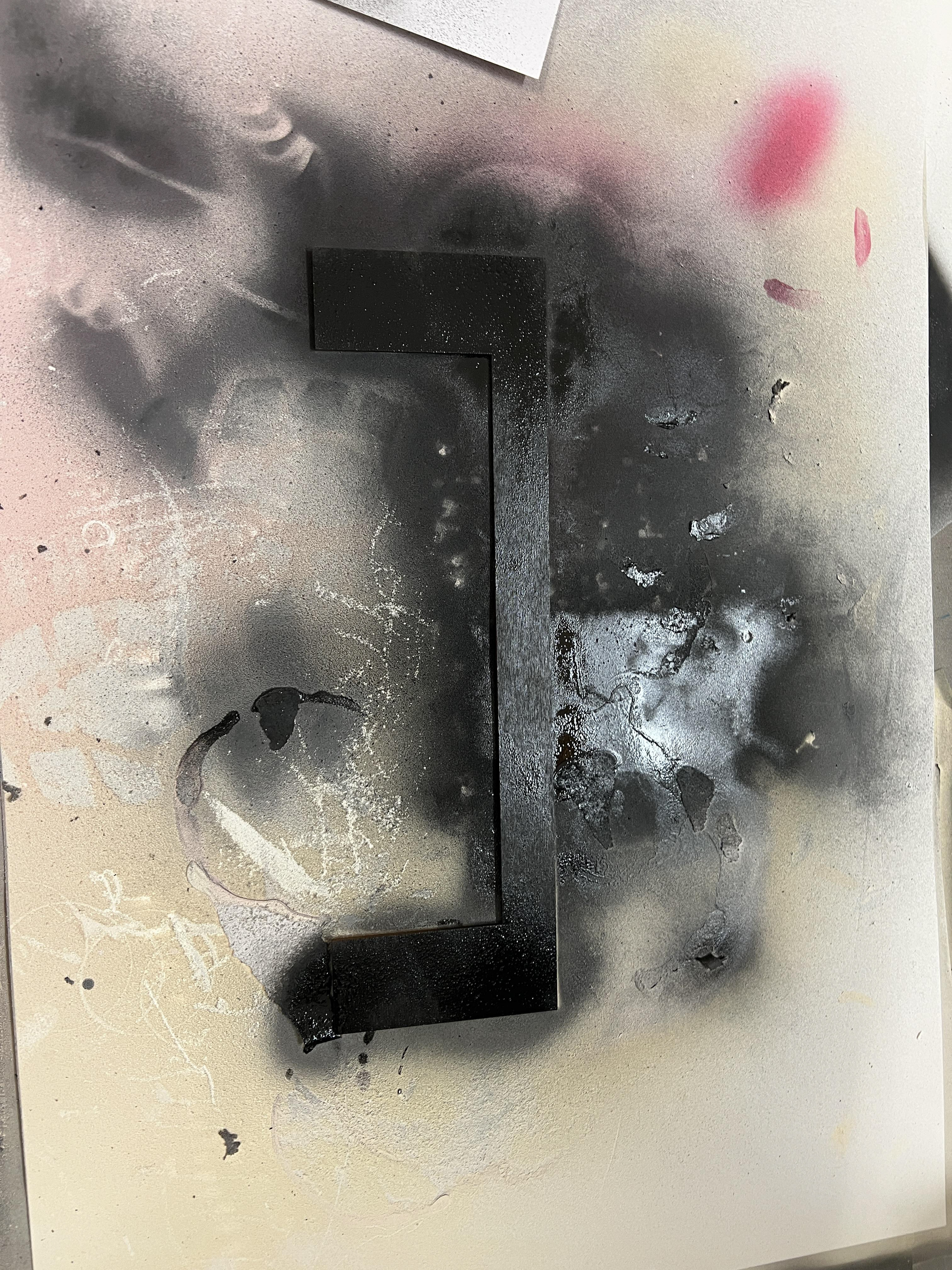
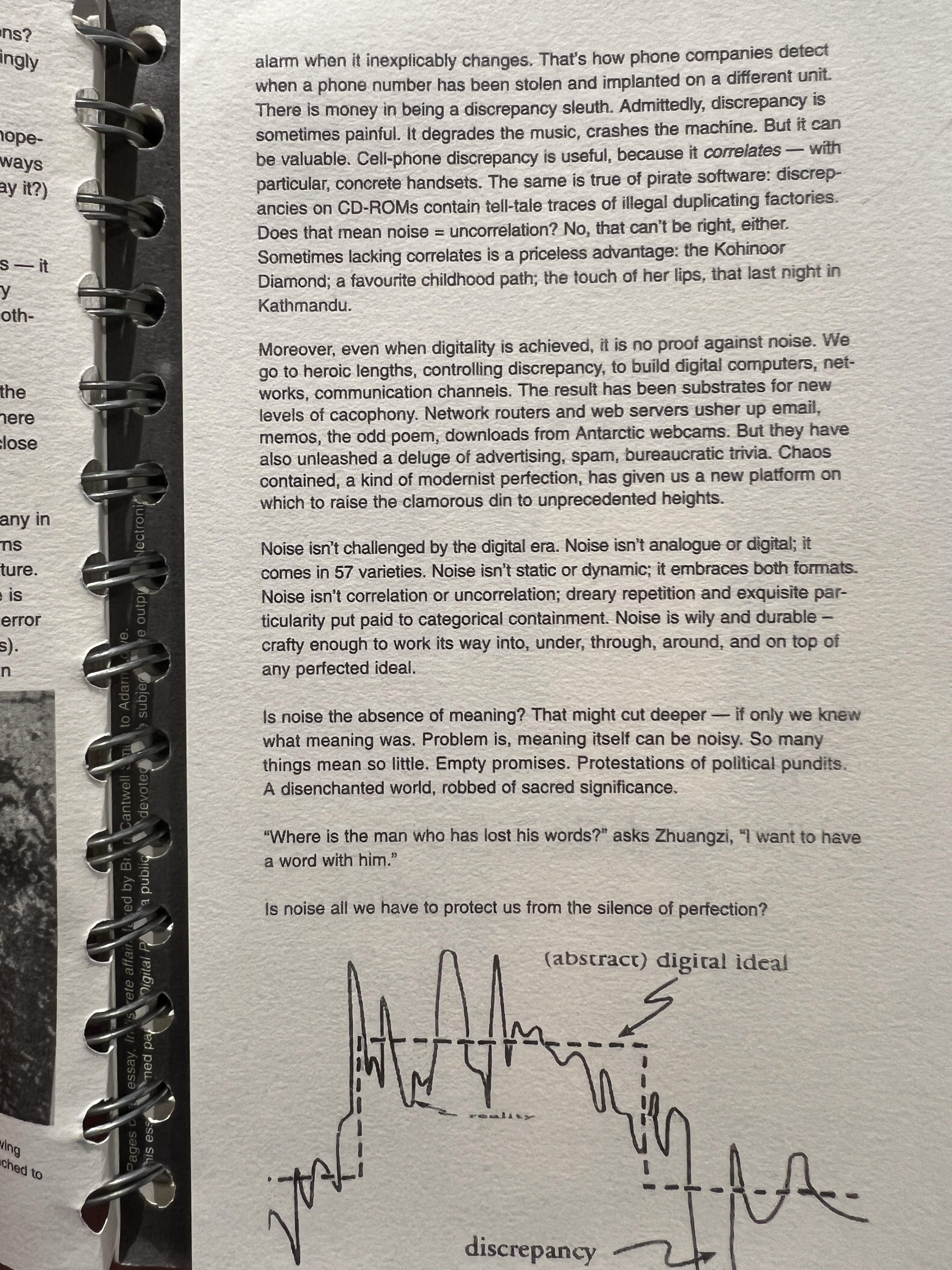

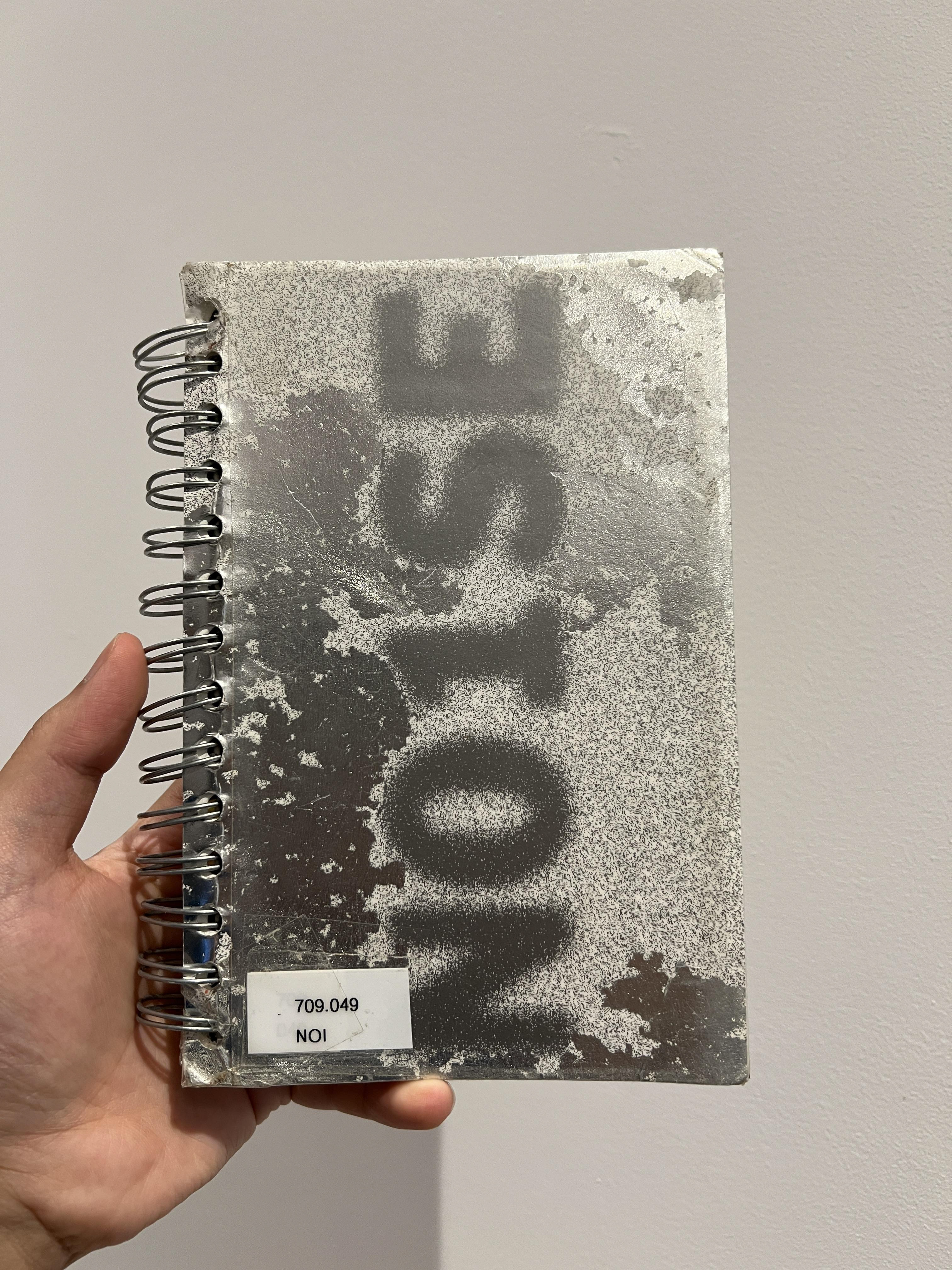
No1se is a collection of exhibitions and a book about how we perceive and how we communicate our perceptions. We normally take noise to be a nuisance that other people make, a cacophony that prevents us from being heard, or even from thinking. But the noise of a crowded room is of conversations, of thoughts and information being exchanged. And, what's more our conversation is part of it.
Noise isn't challenged by the digital era. Noise isn't analogue or digital; it comes in 57 varieties. Noise isn't static or dynamic; it embraces both formats. Noise isn't correlation or uncorrelation; dreary repetition and exquisite particularity put paid to categorical containment. Noise is wily and durable - crafty enough to work its way into, under, through, around, and on top of any perfected ideal.
Is noise the absence of meaning? That might cut deeper - if only we knew what meaning was. Problem is, meaning itself can be noisy. So many things mean so little. Empty promises. Protestations of political pundits. A disenchanted world, robbed of sacred significance.
"Where is the man who has lost his words?" asks Zhuangzi, "I want to have a word with him."
Is noise all we have to protect us from the silence of perfection?
Pre-Human times
I began researching into the history of noise, tracing it from pre-human eras to our digital age. Noise, like a coin, has two facets with both positives and negatives, and its evolution and utilization over time, whether with animals in nature in ancient times or with humans in medieval times, showcase its diverse impacts.
I came across articles discussing how natural design adapted to handle noise disturbances in ancient times, and how this evolved into human-made design to combat such disruptions. Animals in ancient times developed different design tactics to manage and benefit from the sounds in their surroundings. Natural events such as thunderstorms, volcanic eruptions, and earthquakes had a significant impact on the acoustic and physical environment even in ancient times.
(Animal Ethics, 2016) Natural disturbances like thunderstorms, volcanic eruptions, and earthquakes significantly affected the acoustic and physical environment even in pre-human times. (Global Volcanism Program, 2023) It's a fact that around the world, there are at least 20 active volcanoes erupting at any given time, and this number doesn't include the ones that erupt underwater, which are actually more numerous. These eruptions can last for months or even years, and they spew out lava and ash that can be both abrasive and toxic. They can also cause explosions and heat up nearby water, which can have devastating effects on marine life, sometimes even boiling them alive.
https://www.bbc.co.uk/news/science-environment-26035447
https://soundapproach.co.uk/hamish-taught-me-all-he-knows-about-bird-sounds/
Medieval times
As humans evolved, their relationship with sound became increasingly complex, especially as they transitioned from hunter-gatherer societies to settled agriculturalists and eventually urban dwellers. In medieval times, human-designed solutions to combat noise began to appear in the planning and architecture of early cities, reflecting an advanced understanding of soundscape ecology. The layout of medieval towns often reflected an intuitive grasp of acoustic design.
In the Middle Ages, the soundscape was a rich collection of sounds that blended the divine with the earthly, and the tranquil with the jarring. Church bells reverberated through the countryside, stirring up a sense of community and purpose. These chimes were a hallmark of daily life, marking the hours and calling townsfolk to prayer. The design of medieval architecture often incorporated elements that minimized noise disruption while enhancing desirable sounds. The thick stone walls of medieval castles and monasteries, for instance, served as effective sound barriers, protecting inhabitants from external noise disruptions such as the clamour of warfare or the workings of nearby villages. Inside these structures, courtyards and strategically placed windows were designed to channel pleasant sounds, like the ringing of church bells or the flow of water from fountains, creating a serene soundscape that promoted tranquillity and spiritual reflection.
The medieval era was filled with a mix of harmonious and unsettling sounds, including the clanging of blacksmiths' hammers, the clash of swords, and the cries of battles. The presence of warfare was constantly felt, with sounds of warriors, warhorses, and siege engines disrupting the tranquility. Additionally, ancient armies used war elephants in battles, but they discovered that elephants could be intimidated by loud and unexpected sounds, such as the screams of pigs and blaring trumpets. These sounds illustrated the era's volatility, reflecting the divided nature of life during those times.
https://brewminate.com/the-use-of-sound-as-strategy-in-ancient-and-medieval-warfare/
Industrial era
The first human-generated noises were simple and intermittent, coming from tools and communal activities. These sounds became more complex as humans developed technologies such as metallurgy and carpentry.
The arrival of the Industrial Revolution marked a turning point in human history, ushering in an era of unprecedented noise. The clatter of machinery, the roar of steam engines, and the din of bustling cities profoundly transformed the world's soundscape. As factories sprang up and rail networks expanded, the noise grew louder and more pervasive, drowning out the once-muted sounds of human activity and nature. The early technologies of the Industrial Revolution, such as steam engines and mechanical looms, produced continuous, jarring, and unfamiliar sounds that disrupted the peace of daily life. The noise not only affected the workers' physical health, causing hearing loss and high levels of stress but also penetrated homes and public spaces, diminishing the quality of life for many.
David M. Turner and Daniel Blackie wrote a book in 2018 called ‘Disability in the Industrial Revolution’. In this book, they describe an incident where James Jackson, a 36-year-old coal mine worker, suffered severe burns on his face, neck, chest, hands, and arms, as well as internal injuries, due to a gas explosion. The pain was so unbearable that he had to be given opium to cope with it. After six weeks of recovery, a doctor deemed him fit to return to work, but with the likelihood of permanent scars from his injuries. The growth of cities only exacerbated the problem, creating a complex interaction between human activity and the environment that often came at the cost of tranquillity and ecological balance. Urban planning eventually began to take into account the impact of noise, but it was often insufficiently enforced, and residential areas near factories continued to be inundated with noise. The soundscapes of cities became defined by noisy environments like markets, theaters, and public squares, altering the social rhythms and interactions of their inhabitants.
https://www.history.com/news/industrial-revolution-negative-effects
Digital Age
The 20th and 21st centuries have seen unprecedented technological advancements, significantly contributing to noise pollution. Extraction industries, such as oil drilling and seismic blasting, have been particularly detrimental, introducing noise pollution into previously unspoiled habitats. Seismic blasts, used to locate underwater oil deposits, produce loud, reverberating sounds that disrupt marine life, affecting communication, breeding patterns, and navigation. Noise pollution has severe environmental and social consequences, including hearing damage, stress, and even death for marine life. In human communities, it is recognized as a critical public health issue, contributing to chronic sleep disturbances and cardiovascular diseases. Consequently, the development of quieter machinery and improved urban planning practices has become essential to mitigate these effects.
In the digital age, noise pollution continues to evolve alongside technology. The proliferation of digital devices and constant connectivity introduces a new layer of noise in our lives, which is more cognitive than auditory. The principles of soundscape ecology remain applicable, as managing digital "noise" in terms of interruptions and distractions becomes increasingly crucial. Modern design solutions to mitigate noise pollution include the development of soundproof materials and advanced urban planning, which incorporate green spaces and noise barriers to create quieter urban environments.
https://www.techradar.com/news/audio/portable-audio/best-noise-cancelling-headphones-1280490
https://academic.oup.com/icb/article/41/5/1157/343557


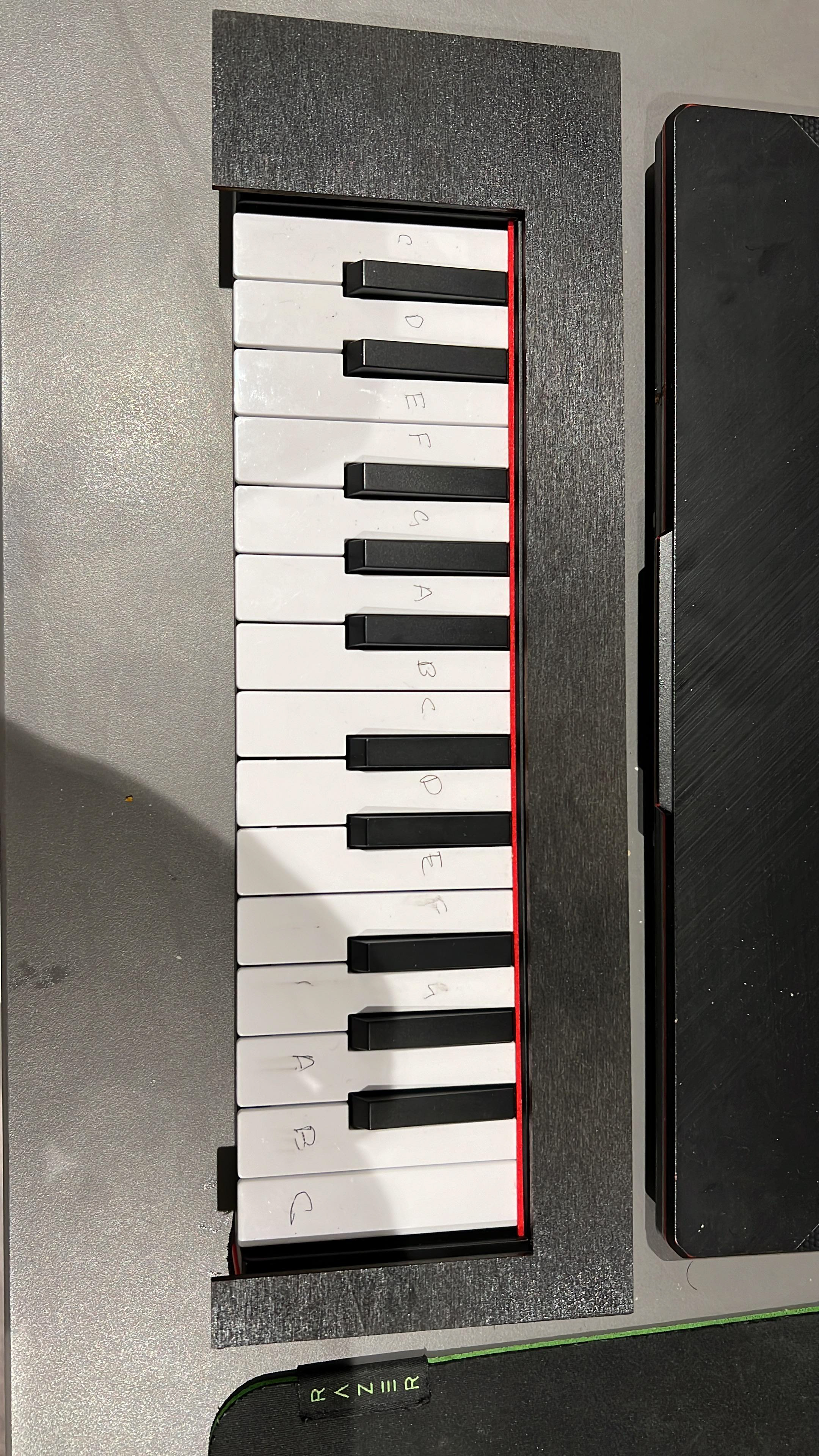
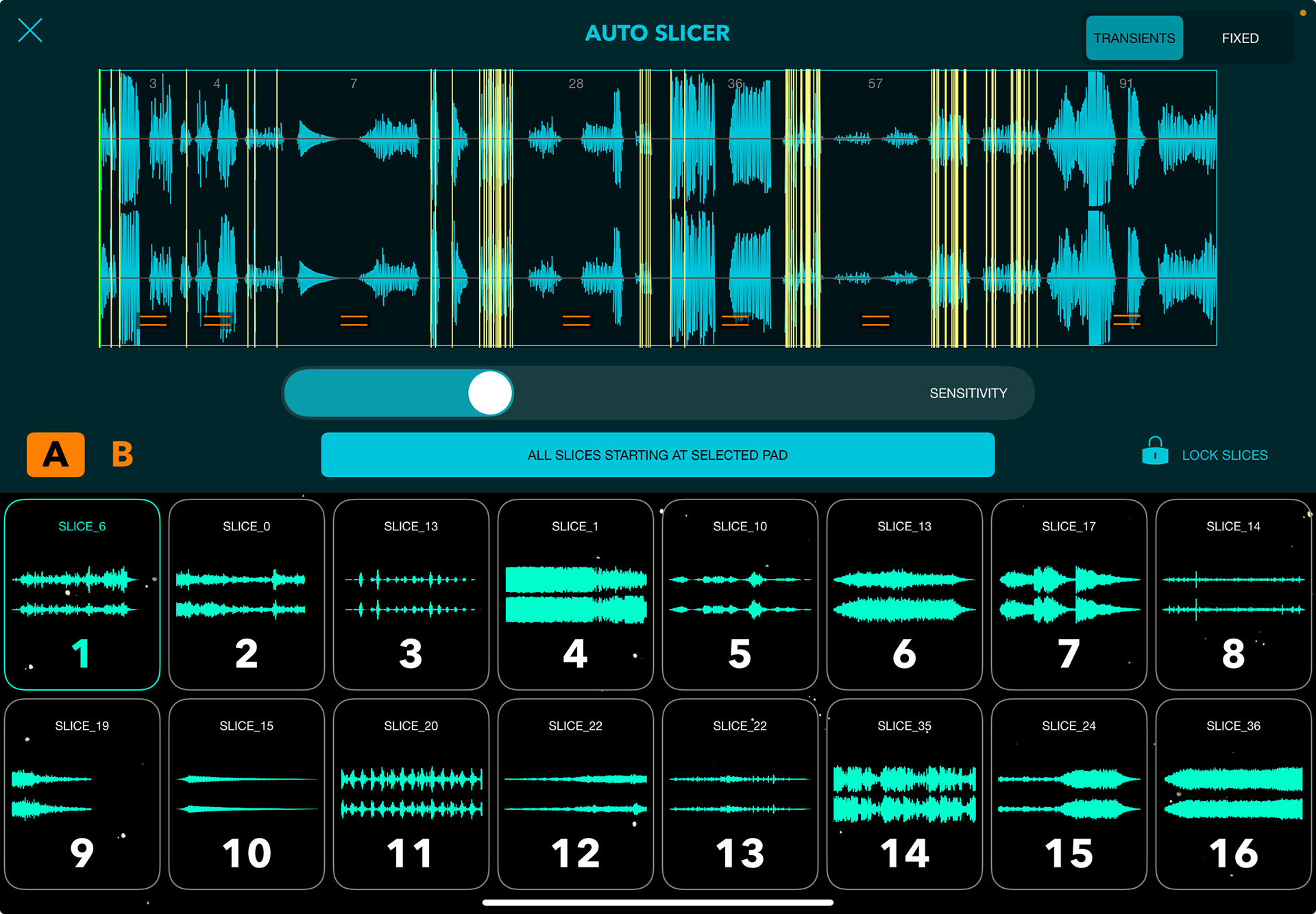
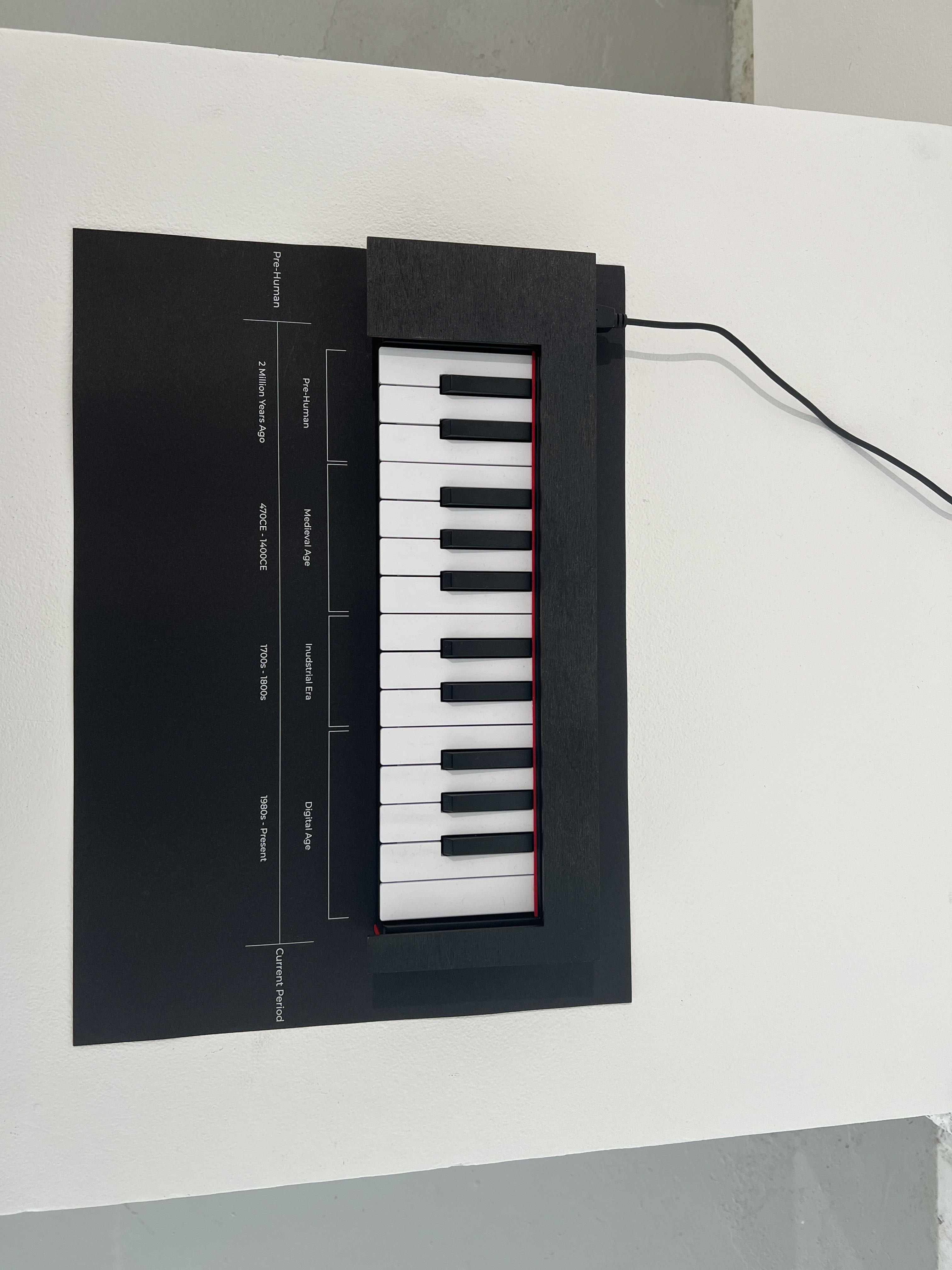
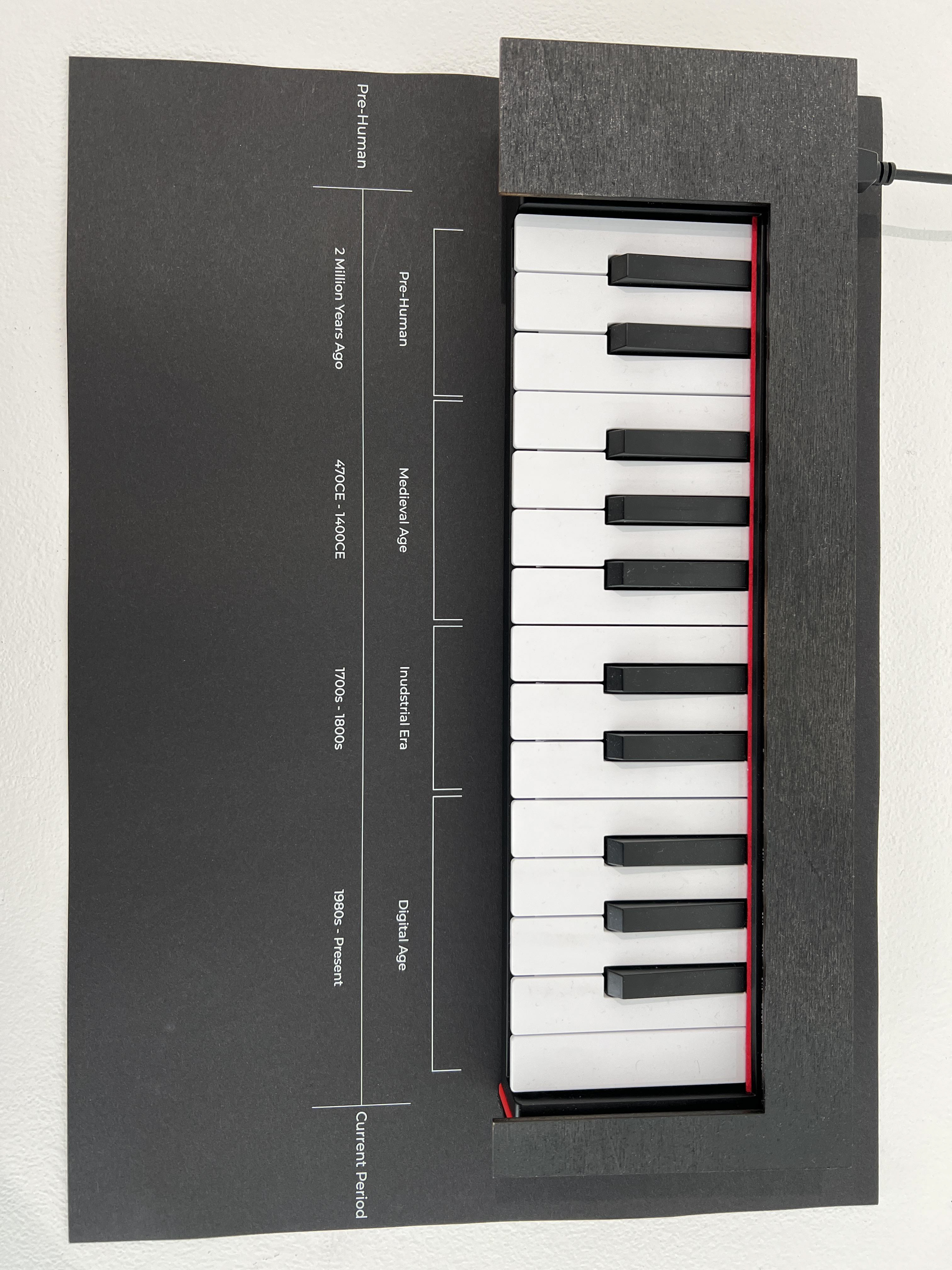
Curatorial Statement and Project Description
Curatorial Statement:
"Disrupted Nature": A musical exploration of humanity’s impact on the natural world through a symbolic musical keyboard. White keys represent nature’s voices, while black keys symbolize disruptions like meteors and human-generated noise. This exhibition prompts reflection on human roles in environmental degradation and calls for conservation and restoration.
Project Description:
"Disrupted Nature": An immersive exploration of noise's impact on the natural world, depicted through a symbolic musical keyboard. This artefact examines the evolution and impact of noise disruptions from pre-human times to the present, using soundscape ecology theory.
Additional References and Technical Guidance
References: "The Story of Content: Rise of Marketing," "Cinema Paradiso," and the Sapir-Whorf Hypothesis.
Talk with Sam Lanyon: Following recommendations from Bryan and Lizzie, I discussed my project with Sam Lanyon, who suggested using a children's keyboard modified with an Arduino audio player. This approach avoids the need for an additional device and simplifies the setup.
Insights from Martin’s Lecture (April 19)
Design and Activism: Exploring the intersection of design and social activism.
Italian Futurist Manifesto: Understanding the historical context and impact of this movement.
Bauhaus: Recognizing its role as a center of new art and creative elements, encompassing various artists and the principle of "Functionality Dictates Form."
This week’s experiences have deepened my understanding of curation, design, and the complex relationship between humanity and the environment. I look forward to continuing this journey of exploration and creation.